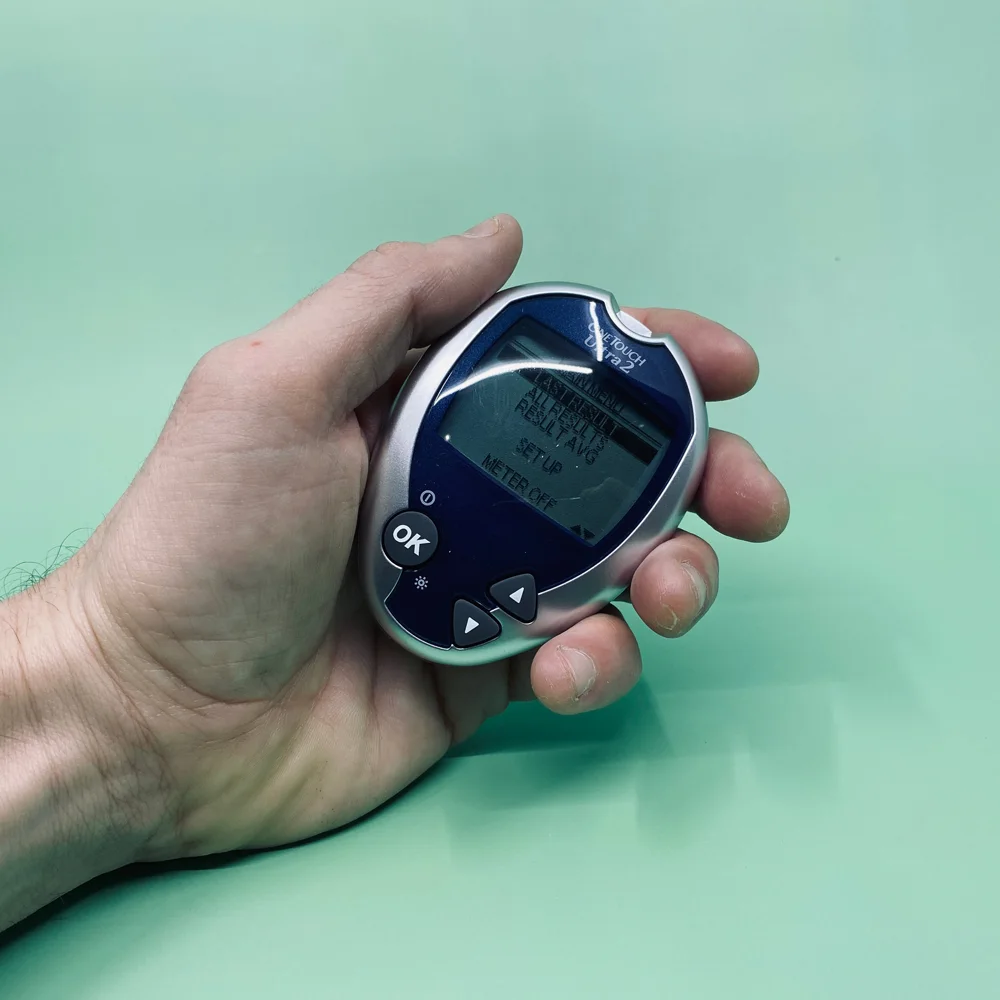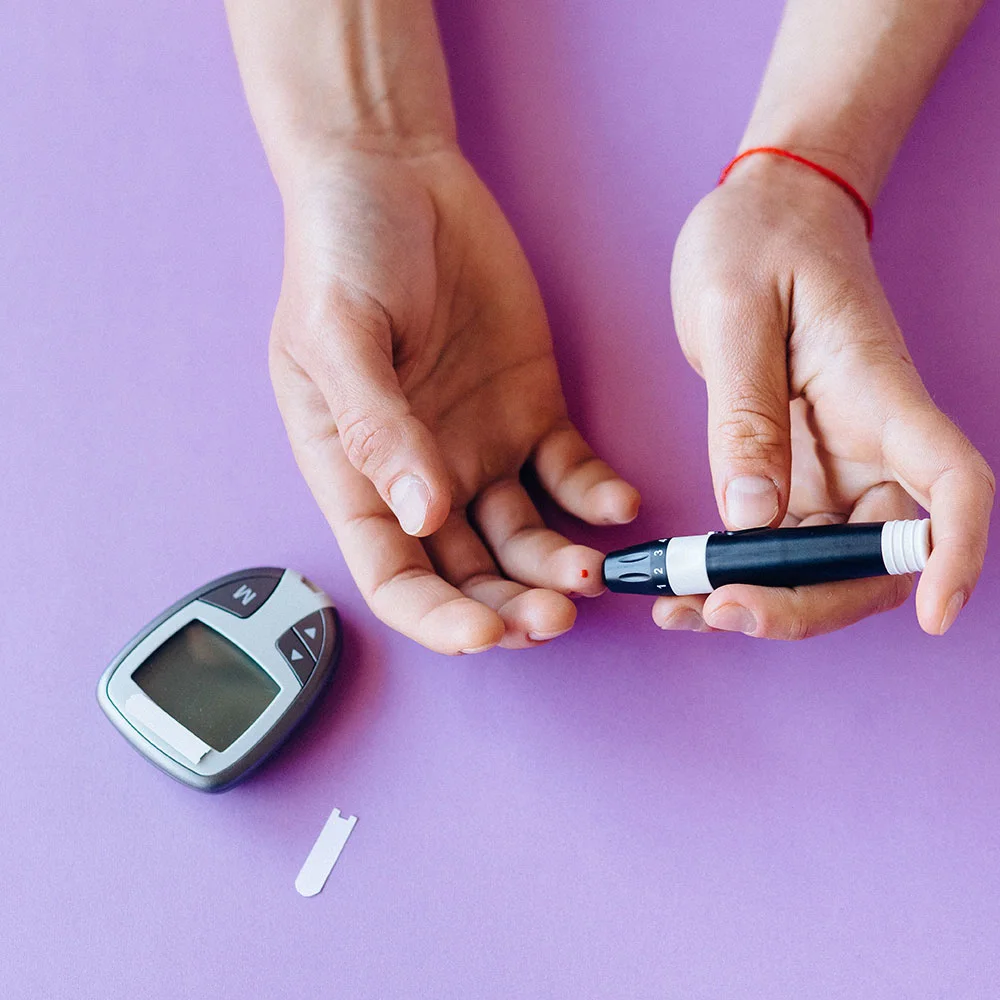Here's what we'll cover
Here's what we'll cover
Here's what we'll cover
Glucose is a type of sugar and is one of the primary fuels of the body. It provides cells with the energy they need to do their jobs and stay alive. As such, every single person has glucose flowing in his or her blood. Usually, blood glucose levels are regulated by hormones in the body, such as glucagon and insulin. However, in a few disease states - most notably in diabetes mellitus - blood sugar levels are uncontrolled, requiring treatment.
The fasting plasma glucose (FPG) test is one type of test that checks blood glucose levels in the body. It can be used to screen for diabetes and prediabetes. Other tests that can be used for screening include the oral glucose tolerance test (OGTT), the random plasma glucose test, and the hemoglobin A1C test (HbA1c).
What are the ADA screening recommendations?
The American Diabetes Association (ADA) recommends screening for diabetes and prediabetes every three years in all adults who are (ADA, 2019):
Considered overweight or obese (body mass index >25)
Who have one or more additional risk factors for diabetes
Asian Americans with a body mass index >23 who have one or more additional risk factors for diabetes
Learn more about BMI and how to calculate yours here.
The ADA also recommends screening overweight and obese adults without additional risk factors beginning at age 45. On the other hand, the United States Preventive Services Task Force (USPSTF) recommends screening all overweight and obese individuals ages 40–70 for abnormal blood glucose levels (USPSTF, 2015).
How is the fasting plasma glucose test performed?
The FPG test is a blood test that looks at your blood glucose levels when you have been fasting. Fasting means that you have not eaten or drunk anything (except for water) for at least eight hours before having the test done. As you can imagine, the FPG test is usually done in the morning, after you have been fasting all night. One of the reasons it is important to check fasting blood sugar levels is because ingesting food or drink can raise your blood sugar levels. If you ingest something within eight hours of the test, your healthcare provider may not know how to interpret the results.
In a healthy individual, fasting plasma glucose levels are 70-99 mg/dL. Test results of the FPG test can, therefore, be interpreted as the following:
FPG 70-99 mg/dL is considered in the normal range
FPG 100-125 mg/dL indicates you may have prediabetes (sometimes referred to as impaired fasting glucose)
FPG > 126 mg/dL indicates you may have diabetes
For a diagnosis to be made, the test needs to be repeated on another day shortly after that, and yield similar results. Alternatively, a diagnosis can be confirmed using one of the other screening tests mentioned earlier. A single abnormal FPG level is not sufficient for a diagnosis of diabetes or prediabetes.
What are the advantages and disadvantages of the fasting plasma glucose test?
One advantage of the FPG test is that, for many people, it’s relatively convenient. The test can typically be done in a healthcare provider’s office or a lab. The blood can be collected either by fingerstick or by drawing blood from a vein (venipuncture), and the results may be available within a few seconds.
The main disadvantage of the fasting plasma glucose test is that a single test cannot confirm a diagnosis. To be diagnosed with diabetes or prediabetes, you need to return to your healthcare provider on a different day to repeat the test, or have one of the undergo another type of screening tests. Additionally, it is a less-sensitive test than the OGTT. This means that the FPG test might miss being able to diagnose diabetes in some people that the OGTT would be able to identify.
Another disadvantage of the test is that it may not be practical for some people to fast for eight hours. Lastly, the FPG test is unable to distinguish between type 1 diabetes, type 2 diabetes, or gestational diabetes. It is also unable to determine if something else may be causing elevated blood glucose levels (such as if you are taking medications like steroids).
To assist in diagnosis, your healthcare provider will likely ask you more questions about your medical history, your medications, and any symptoms you may have. He or she may also order additional tests.
DISCLAIMER
If you have any medical questions or concerns, please talk to your healthcare provider. The articles on Health Guide are underpinned by peer-reviewed research and information drawn from medical societies and governmental agencies. However, they are not a substitute for professional medical advice, diagnosis, or treatment.
References
American Diabetes Association. (2019). 2. Classification and Diagnosis of Diabetes: Standards of Medical Care in Diabetes—2019. Diabetes Care , 42 (Supplement 1). doi: 10.2337/dc19-s002. Retrieved from https://care.diabetesjournals.org/content/42/Supplement_1/S13
United States Preventive Services Task Force. (2015). Final Update Summary: Abnormal Blood Glucose and Type 2 Diabetes Mellitus: Screening - US Preventive Services Task Force. Retrieved from https://www.uspreventiveservicestaskforce.org/Page/Document/UpdateSummaryFinal/screening-for-abnormal-blood-glucose-and-type-2-diabetes












